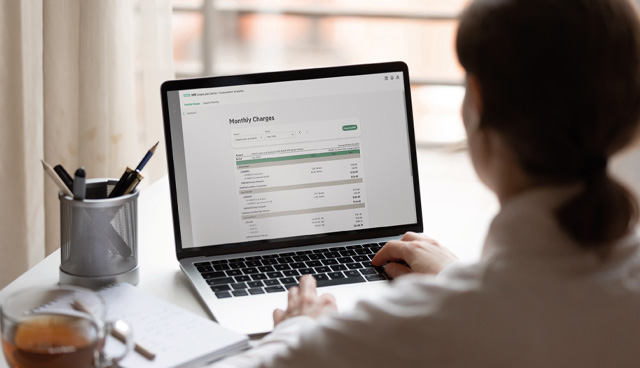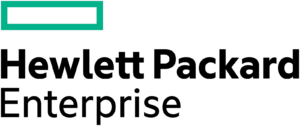The re-imagined workplace

Hewlett Packard Enterprise MD Maeve Culloty on the pandemic, remote working, connectivity and HPE solutions to transform the re-imagined workplace.
When the pandemic first started to spread in early 2020, business leaders were not concerned about what their workplaces would look like in the 2030s. They were focused on making it through the first wave of disruption: Get team members working remotely; keep people safe; keep the business running.
Now, approaching the end of 2020, leaders are still dealing with the pandemic’s effects. At the same time, they’re starting to look ahead. They’ve learned how to adjust to a new mode of work and tested out new practices. In some cases, the pandemic has changed the way organisations think about the workplace. In other cases, it has simply accelerated workplace transformations that were already underway. Either way, these leaders are now ready to reimagine the workplace of the future.
What’s it going to look like? What will change? How will businesses’ responses to the current pandemic reshape the way they work in the 2030s and beyond? How will employees experience change? What will success look like for those embarking on the journey of transforming the workplace? These are all questions that need to be answered.
“It’s been an intense business transition for many of our customers,” says Maeve Culloty, MD, HPE in Ireland. “The pandemic has thrust HPE into the frontline, helping to keep many organisations, including local governments around the world operating remotely. The future everyone talked about before the pandemic is now here ahead of schedule,” Culloty says. “Two years ago, HPE predicted the enterprise of the future as edge-centric, cloud-enabled and data driven. Today, that’s no longer a prediction. It is a reality.
“Just a year ago, the true possibility of remote working seemed a long way off,” says Culloty. “Now, according to a Fórsa study, 80 per cent of employees say, even post-pandemic, they want to keep working from home, even if it’s just a few days a week.”
The transition to the re-imagined workplace is future proofed with HPE’s VDI (Virtual Desktop Infrastructure) offering, according to Culloty. “VDI can be roughly defined as a desktop running on a server in a data-centre that can be accessed from virtually any device,” she says.
The promise, of course, is connectivity. Customer organisations are able to create high-performance virtual computer environments. With newly designed VDI configurations optimised for each type of remote public sector worker.
With HPE GreenLake, HPE’s elastic-as-a-service platform, for VDI, customers can select the type of workers they want to support in their organisation and the size of their remote workforce. Based on that, HPE offers customers the right set of technologies and delivers as-a-service solutions for each user type. The recently announced VDI configurations are optimised for each type of remote worker, including knowledge users, operational users and mixed users, and the right configuration is priced, built, and shipped in predefined sizes. Customers are billed monthly based on usage and can scale up or down as needed. This enables secure remote working optimized for all types of workers in the public and private sector.

“It helps to think of organisations and work types in three broad categories,” says Culloty.
The first are what are called knowledge worker environments. “In these, most tasks are desk based, think anything from tech to finance to architecture to admin. In many ways, these are the most amenable to developments like remote working, and it’s no surprise that Silicon Valley is embracing them. You may have heard people like Mark Zuckerburg or Jack Dorsey of Twitter envisage people not just working from home but in different states or even countries if they want to,” says Culloty.
The second set of activities are operational or manual labour environment. “Being physically present was and remains important. As such, they were sometimes seen as more resistant to transformational working practices, but the pandemic has changed this too. Even if people need to be present in workplaces, safety considerations alone may necessitate a greater separation and organising of how workers work and interact. From non-touch security identification procedures to increased automation of some tasks to even the ability to perform some tasks we think of as being hands on in a hand off fashion. We’re all familiar with seeing surgeons performing or advising on complex operations from two metres or half a world away using robot-arms or video conferencing.” Soon, Culloty assures us, this will be an option for many tasks. “From fixing a machine to replacing a component, the whole idea of an expert technician being able to perform or advise on this remotely is now achievable,” says Culloty.
“Research shows people are now more open to, for example, online consultations, and the tech is rapidly developing to facilitate this in everything from medical examinations to teaching. Think of how your children’s teachers can now switch from themselves to slides to films to interactive activities in a remote teaching session. This is just the beginning and will improve.”
The third operational activity set are mixed environments. These are work environments where massive desk knowledge and physical presence have always combined. Public service organisations sit in this category, think hospitals, think public facing services, think schools and libraries. “Here too some services were seen as resistant to transformation,” says Culloty. The physical touch and face-to-face aspect of these activities was and is seen as vitally important. “Rightfully and understandably,” she adds. Yet even here, the pandemic has shown that some aspects of these services are amenable to remote aspects that can potentially improve the service offering, or at least offer the end-user public alternatives. “Research shows people are now more open to, for example, online consultations, and the tech is rapidly developing to facilitate this in everything from medical examinations to teaching. Think of how your children’s teachers can now switch from themselves to slides to films to interactive activities in a remote teaching session. This is just the beginning and will improve,” says Culloty.
“Up to now in the pandemic,” she says, “a lot of what has been done has been to allow people to keep operational remotely on fairly simple levels. The capacity of everyone to adapt has been inspiring, but the opportunity is now to go far beyond that post-pandemic.
“Think of certain public sector workers, architects or town planners, for example, who may need high graphic interfaces that they can all work on collaboratively from anywhere. That’s possible. Think of skilled manual tasks that can be performed or advised on remotely. That’s possible,” says Culloty.
“At the beginning of the pandemic the public sector inspired everyone in how fast they pivoted in everything from the health service to pandemic payments to just keeping the country going. It’s exciting to think of how that agility will be brought to bear on the future,” says Culloty.
“This pandemic has been a massive change, but one of our principles is to see change as an opportunity. We’d welcome further collaboration with the public sector on how the HPE team in Ireland can support Government departments to emerge from the pandemic stronger and more connected, for employees, and public service users,” Culloty concludes.
W: hpe.com/ie/en/contact-hpe
T: 01 907 9337






